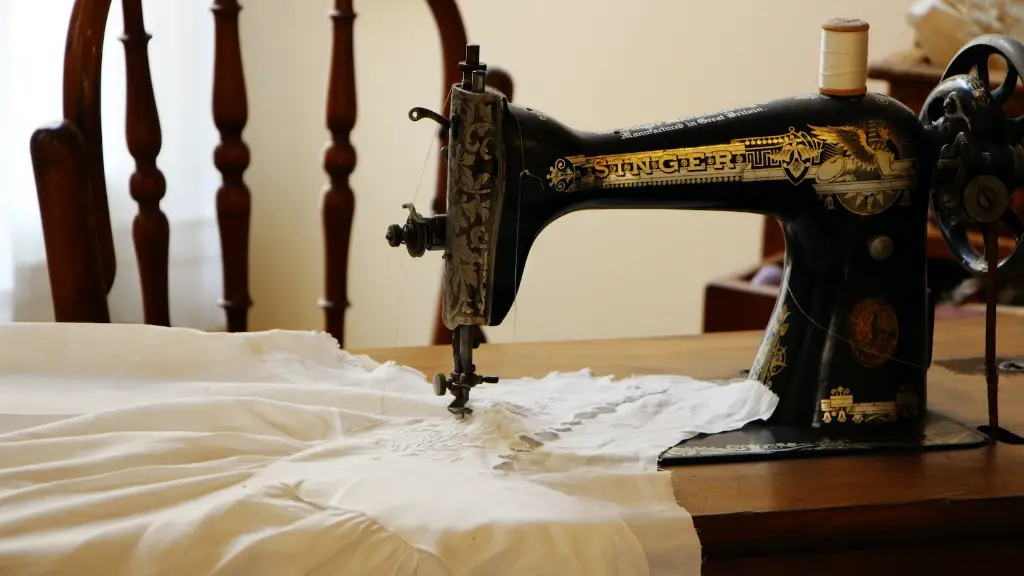Safety
Working on any type of machinery can be hazardous, so it’s important to be aware of some safety considerations when fixing a handwheel on a sewing machine. First and foremost, unplug the machine from its power source before starting any repairs. Make sure that all parts of the machine, including the area around the handwheel, are clear of any clutter. Secondly, use appropriate tools to repair the handwheel – tools that are specific for working on the make and model of sewing machine you are using. Lastly, wear protective clothing and eyewear to protect against potential hazards such as flying debris.
Identifying the Problem
When fixing a handwheel on a sewing machine, the first step should always be to identify the issue. In some cases, the handwheel may not be firmly attached to the machine, and the problem can be easily fixed by tightening the screws that hold it in place. Other times, it can be a more complex problem, such as a defect in the handwheel, a stripped thread, or a faulty motor. If a more complex problem is suspected, it’s best to consult an expert, or at least research the problem further before attempting repairs.
Gaining Access to the Handwheel
Once the cause of the problem has been identified, the next step is to gain access to the handwheel to start the repairs. This can be done by locating the screws that secure the handwheel to the machine and removing them accordingly. Be sure to keep track of any parts that are removed, including screws and any other components.
Removing the Handwheel
If the problem is more complex than a loose screw, it may require the removal of the entire handwheel. When removing the handwheel, be sure to take your time, as the inner mechanisms are delicate and can easily be damaged. Carefully remove the screws from the handwheel and the machine itself, taking care not to misplace any components.
Checking for Wear and Damage
Once the handwheel is removed, it’s important to inspect it for wear and damage. Many handwheels are equipped with lock washers and bushings which may need replacing if they are worn or damaged. Additionally, the shaft, sprockets, and springs should all be checked and tightened if needed.
Replacing or Repairing Components
If any components need replacing or repairing, make sure that they are appropriate for the make and model of sewing machine you are using. It’s best to consult a professional or research the specific components needed to ensure that they are compatible with the machine.
Attaching the Handwheel
After replacing or repairing any components, the final step is to reattach the handwheel to the sewing machine. Carefully thread the screws through the mounting holes, then use appropriate tools to tighten them. Once the screws have been tightened, the handwheel should be firmly secured to the machine, and the repairs can be complete.
Adjust for Tension
The next step is to adjust the tension on the handwheel by turning it in the appropriate direction. To increase tension, turn the wheel clockwise and to decrease it, turn the wheel counterclockwise. It’s important to note that this step should always be done slowly and carefully, because if the tensions are set too high or too low, the machine may not operate efficiently.
Test the Machine
Once the handwheel has been attached and the tension is properly adjusted, the next step is to test the machine. If the machine operates normally and there is no visible damage to the handwheel, the repairs have been successful. However, if any problems arise, make sure to check the handwheel again and ensure that all components have been properly replaced or repaired.
Inspection and Maintenance
It’s important to inspect and maintain your sewing machine on a regular basis to ensure optimal performance. It’s best to inspect the handwheel at least once a year and more often if there is any visible wear or damage. Additionally, make sure to lubricate all relevant parts and replace any components when needed.
Troubleshooting
In the event that the handwheel is not functioning properly, there are several steps that can be taken to troubleshoot the issue. First, check the tension on the handwheel and make sure that it is properly adjusted. Secondly, make sure that the handwheel is firmly attached to the machine, as loose screws can cause the wheel to be misaligned or even detached. Thirdly, ensure that all relevant components are properly lubricated and that all connections are tight. Lastly, if the problem persists, it’s best to consult a professional or research the issue further before attempting any repairs.


